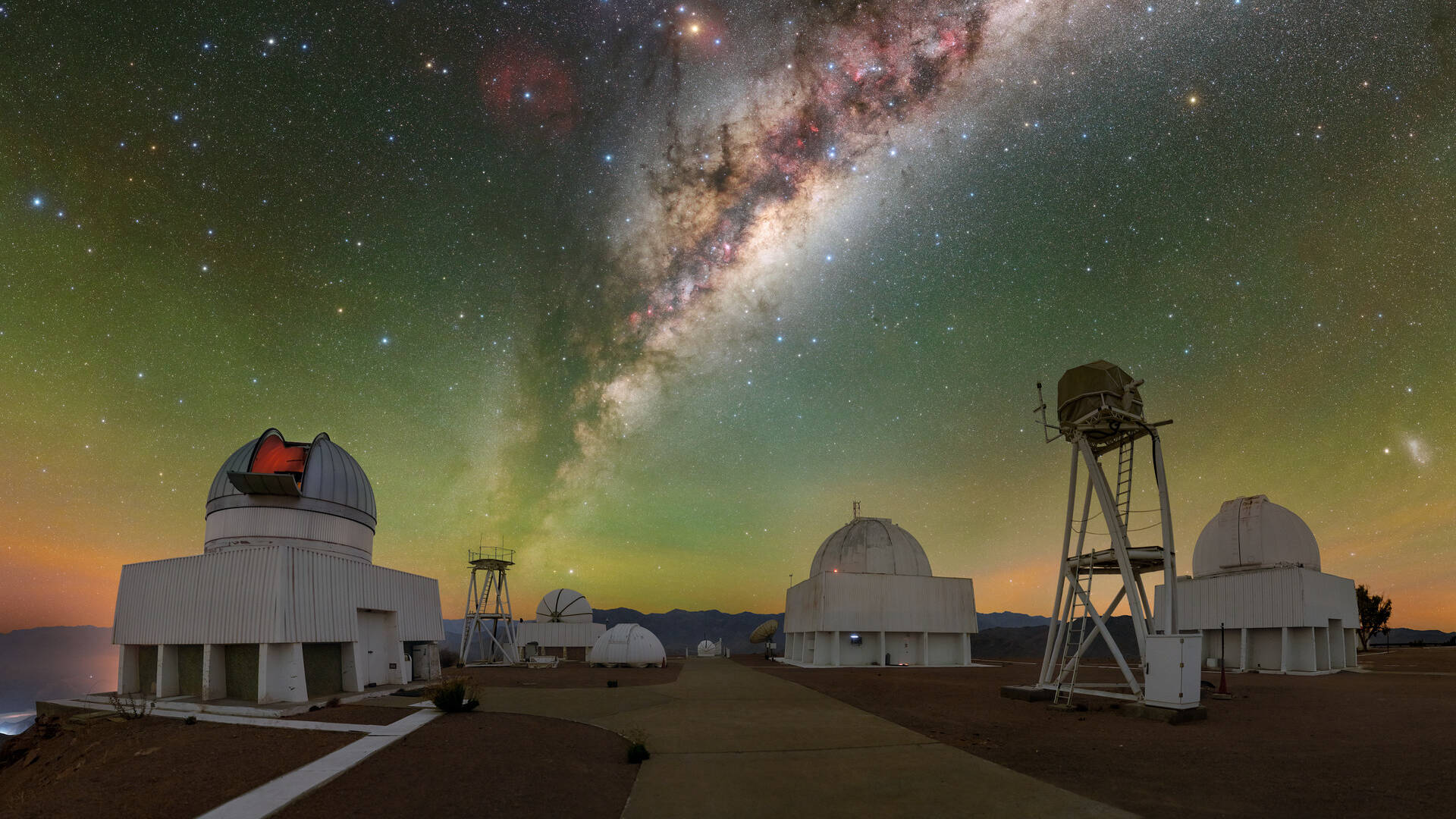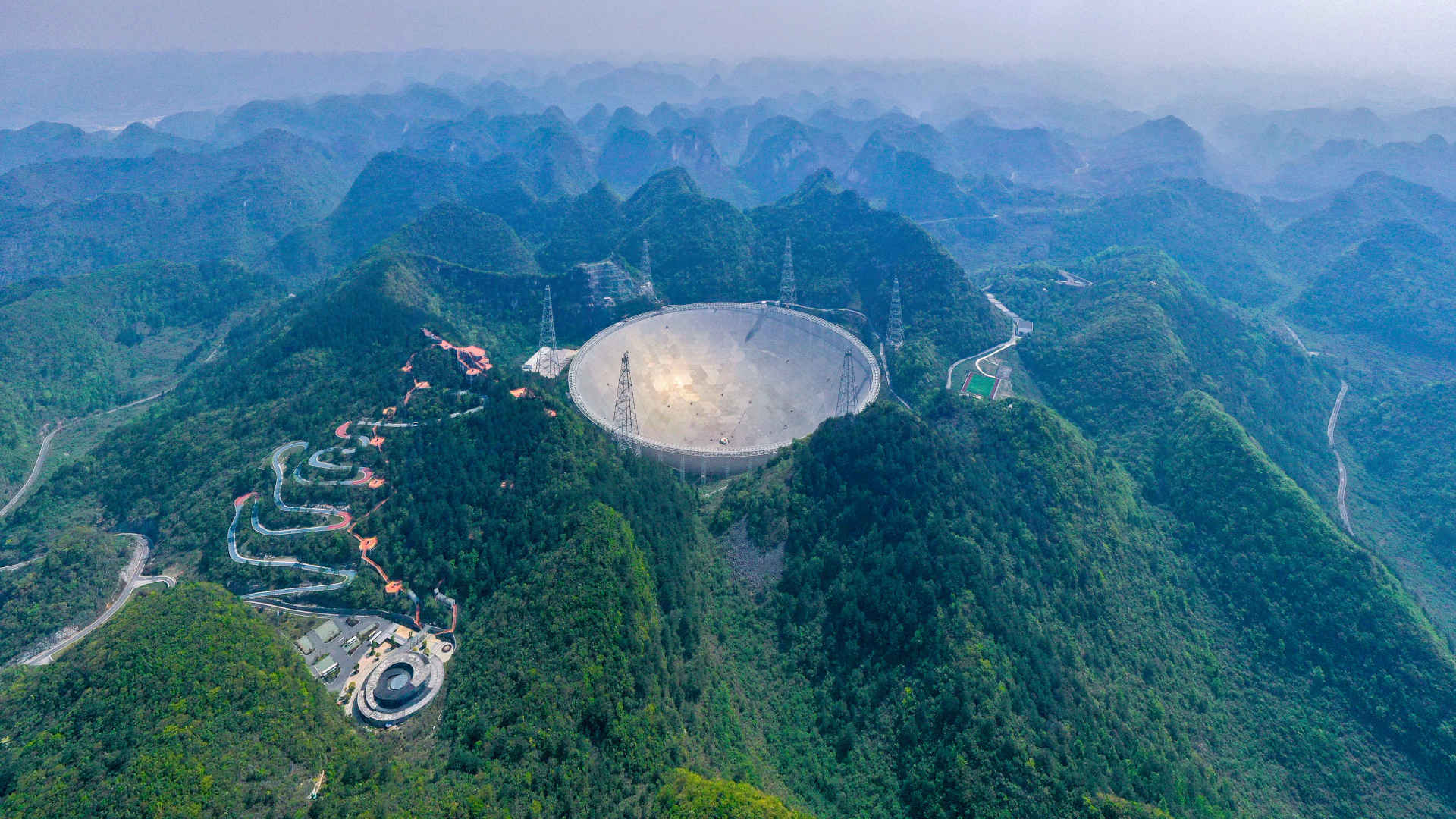Protecting the Darkness in Chile’s Atacama Desert
Growing up in Chile’s Atacama Desert, Paulina Villalobos thought the Milky Way’s presence in the pristine starry skies was a given. Her father, an amateur astronomer, would wake her when a comet crossed the night sky. But Villalobos later moved to Santiago, the capital, to study architecture. There, the stars disappeared amid a haze of city lights. Just like people who come from the coast miss the ocean, she said, “I missed the sky.”
The extraordinary darkness that sheaths the Atacama, which stretches for hundreds of miles in Chile’s north, has made it a haven for astronomers searching for planets and stars shimmering in the night sky. With its high altitude and clear skies, the region is repeatedly chosen as a site for observatories. According to some estimates, by 2030, Chile will be home to around 70 percent of the world’s astronomical infrastructure.
Yet even here, skyglow from hundreds of miles away can overwhelm the faint light emanating from astronomical objects.
Now, a new regulation aims to darken the night skies.
In October, the Chilean government announced a new National Lighting Standard that will become effective later this year. The updated standards expand restrictions on light luminosity, color, and the hours they can be turned on to protect three major concerns: astronomy, biodiversity, and human health.
According to some estimates, by 2030, Chile will be home to around 70 percent of the world’s astronomical infrastructure.
For astronomers, the stakes can feel high. While the Atacama offers a window to answer fundamental questions about the origin of life, that window is at risk of closing in the next 50 years due to increasing light pollution, said Chilean astronomer Guillermo Blanc. Worldwide, the sky is estimated to get brighter by 10 percent on average each year.
The new rule on light pollution in Chile was informed, in part, by a technical advisory committee, which included astronomers and other scientists — Villalobos, who is now an architect and lighting designer, among them. The new regulation, she said, offers “the possibility of recovering the sky.”
Since the 1960s, the Atacama Desert has been an important hub for international astronomy. Today, the region, which boasts more than 300 clear nights per year, hosts some of the world’s most significant observatories, including the internationally funded Atacama Large Millimeter/submillimeter Array and the European Southern Observatory, the latter of which is currently developing the Extremely Large Telescope, set to open in 2028.
NOIRLab, a United States government-funded program, also operates two facilities in the Atacama. The National Science Foundation has invested more than $500 million to build a third facility, the Vera C. Rubin Observatory, which is expected to see first light later in 2025. Yet it too is threatened by light pollution, said Blanc, who works at the Las Campanas Observatory.
The Vera C. Rubin Observatory aims to conduct a 10-year survey of the Southern Hemisphere sky to understand dark matter and energy, take an inventory of the solar system, and map the Milky Way. But in recent years, mining operations and urban development in the area have increased ambient brightness.
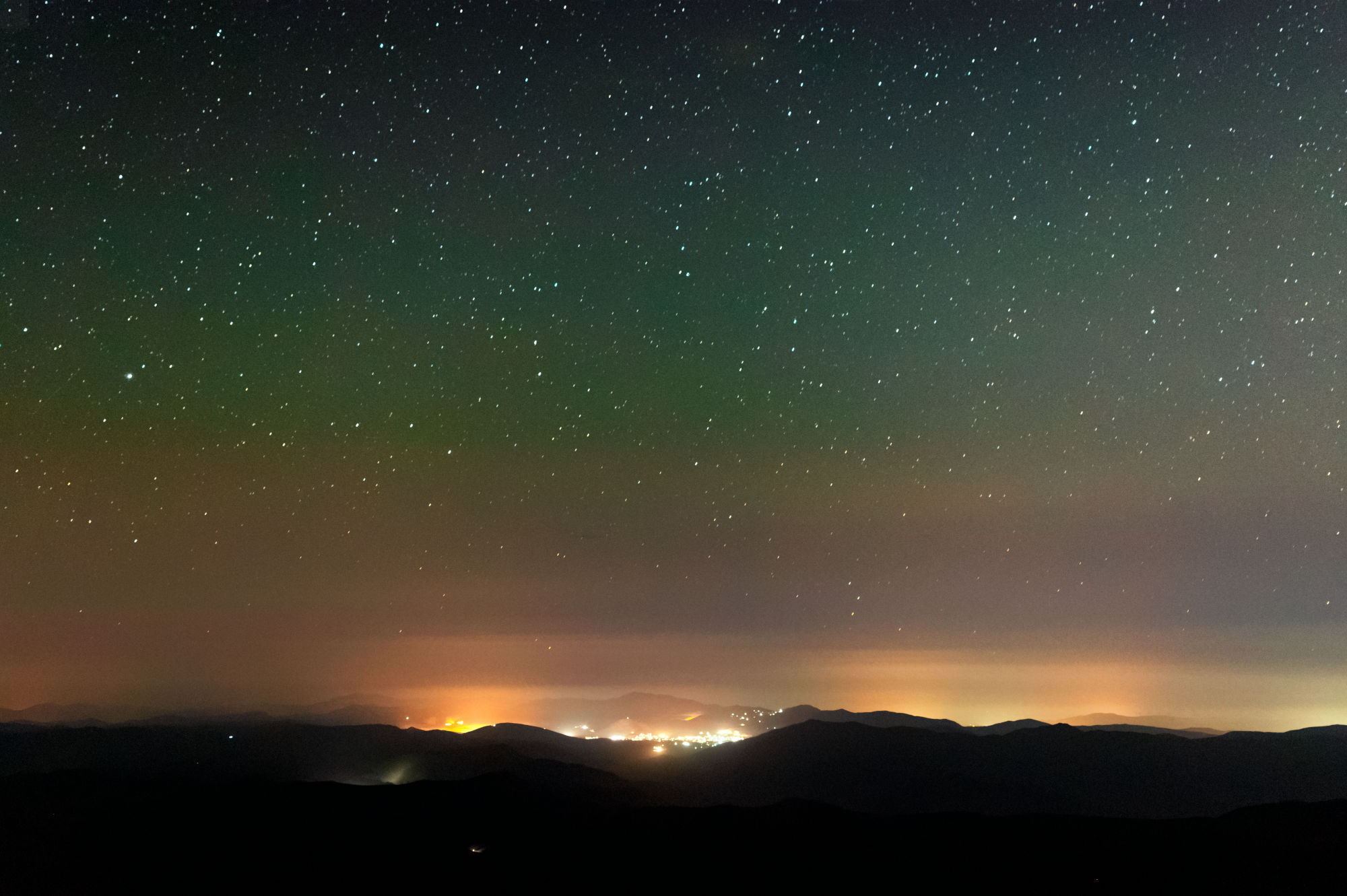
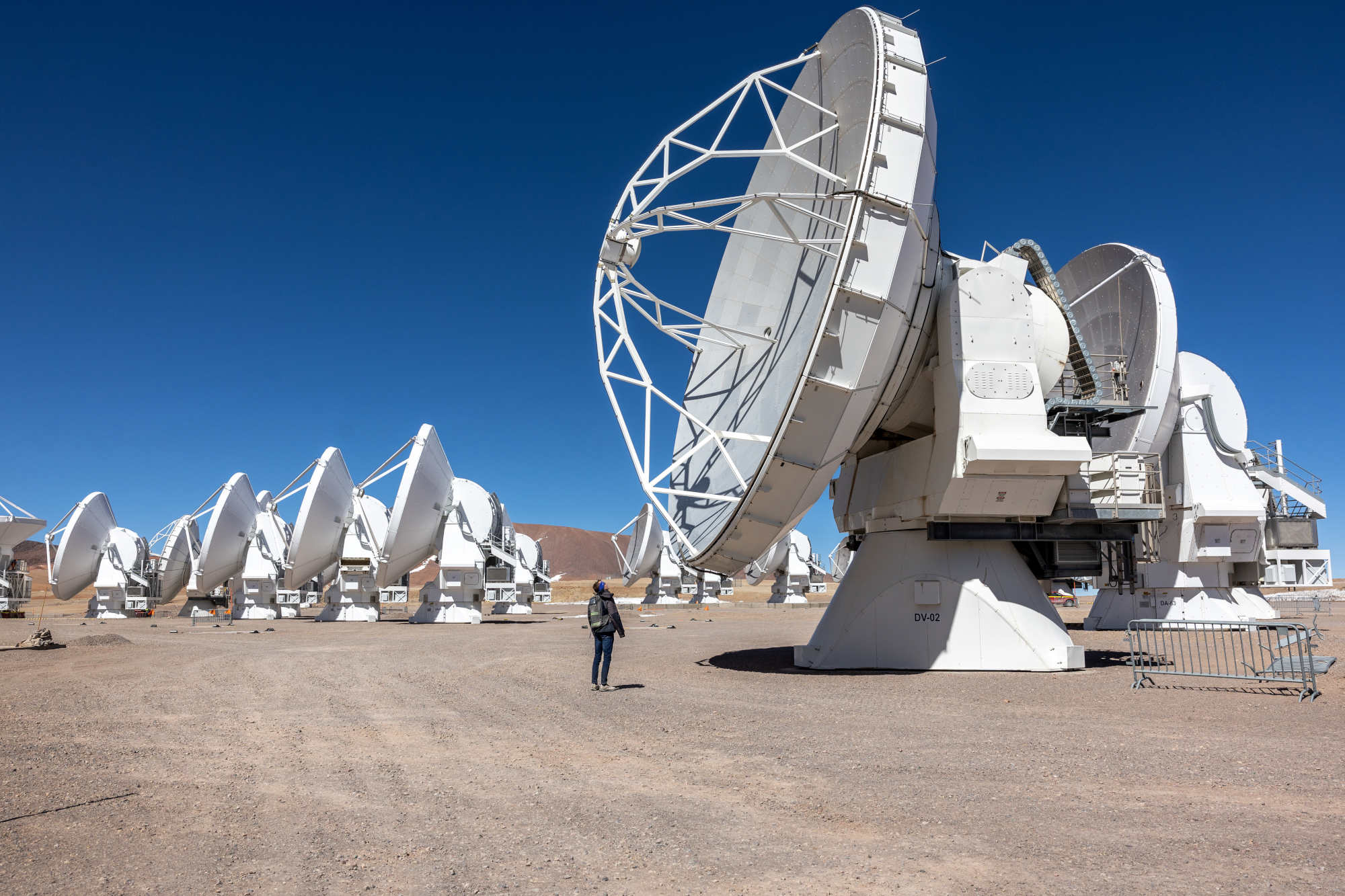
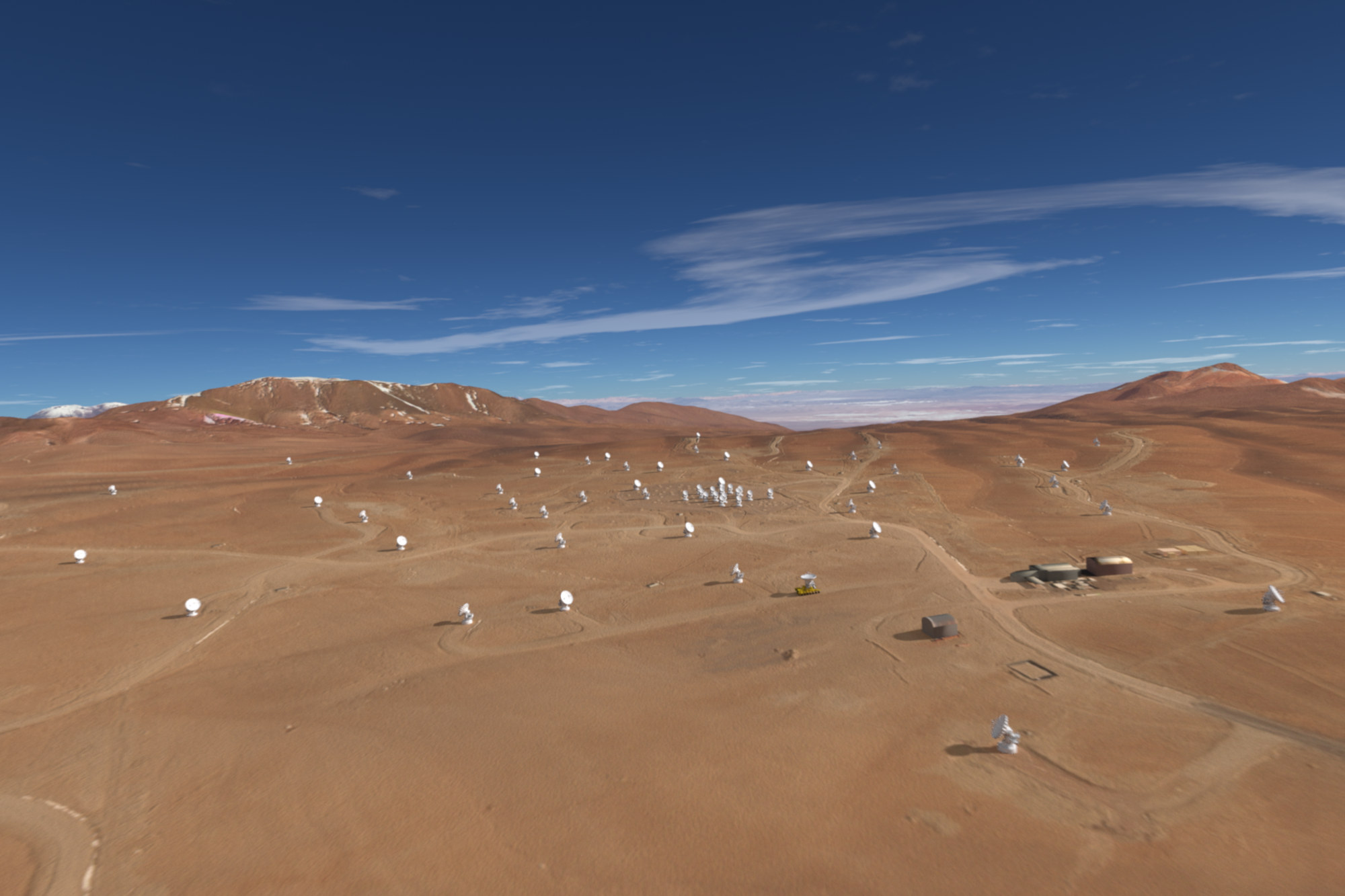
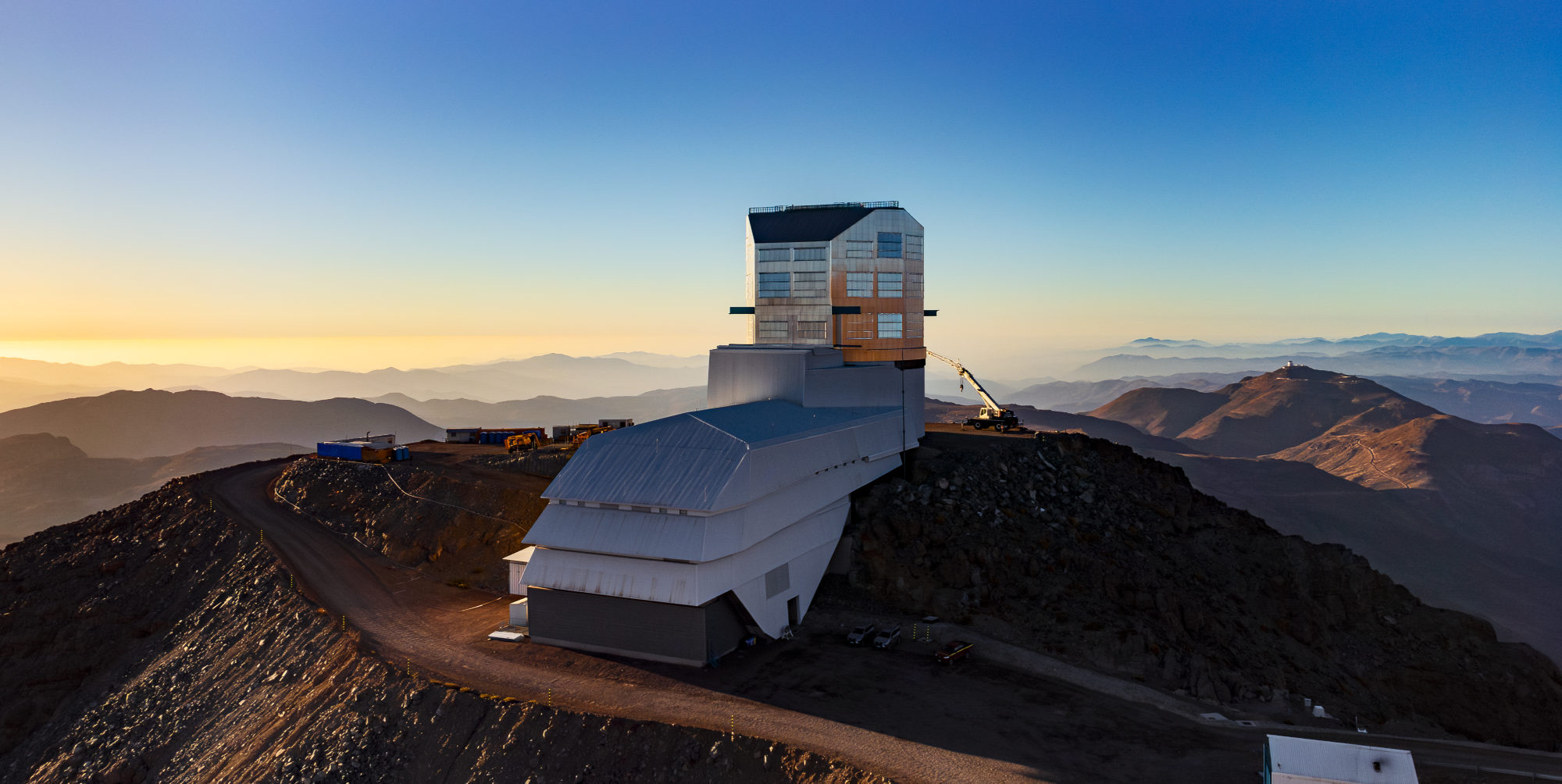
These telescopes are being built to operate for 50 or even 100 years, but “the outlook today is very worrisome in 20, 30, 40 years,” Blanc said.
Those problems are global; worldwide, two-thirds of major professional observatories are affected by levels of light pollution that exceed the expected natural levels, according to a 2023 review. While many observations now take place from telescopes orbiting Earth, ground-based telescopes are still essential to interpret observations from those space-based telescopes. And if the sky’s natural brightness increases, it’s harder to observe faint objects, such as distant galaxies forming on the far edge of the universe or gas orbiting around black holes.
Some observations will require more time — and greater investment: “If you have to spend two nights instead of one night to observe a faint thing because the sky is now artificially brighter, that costs money,” said James Lowenthal, a professor of astronomy at Smith College who also leads the Light Pollution subcommittee for the American Astronomical Society. “We’re talking literally billions of dollars at stake — at least tens of millions of dollars.”
“The outlook today is very worrisome in 20, 30, 40 years.”
Others might become impossible without better technology: “We are directly cutting the possibility of seeing certain phenomena,” said Rodolfo Angeloni, an assistant scientist at NOIRLab’s Gemini Observatory Southern Operations Center who studies stellar astrophysics and the effects of light pollution on the Chilean sky. “If a sky reaches a certain threshold of brightness, the telescopes installed in the area are simply no longer able to do frontier research.”
He cited the Mount Wilson Observatory in California, where the Milky Way galaxy was first measured, as an example. The extraordinary growth of Los Angeles brought significant levels of light pollution. Today, observatories in California have to work with a brightness in the sky that was previously nonexistent.
Chile, however, has other plans.
Chile’s new regulation on light pollution builds upon a previous rule that only protected certain key astronomical sites. The new regulation, in contrast, will apply nationwide. Its aim is not to blackout La Serena or Santiago, some of Chile’s major cities, but to use specific lighting to reduce negative effects.
In 2019, when the Ministry of the Environment began revising the regulation, Chile took a step towards addressing the problem by incorporating light as a legal pollutant. Over 83 percent of the world’s population lives under light-saturated skies, but light is not normally seen — and legislated — as pollution. Many advocates say that it should be.
The sky “is as polluted as, for example, a river that is full of garbage. It’s as polluted as living next to a factory,” said Felipe Loaiza Arias, who works for Chile’s Ministry of the Environment and helped craft the legislation.

The 2023 regulation also recognized that astronomy is not all that’s at risk. Two other focuses were incorporated: biodiversity and human health. Reduced artificial light could aid migrating seabirds, like Markham’s storm-petrel that nests in the Atacama Desert; thousands die each year because of city lights, putting them at risk of extinction. And light pollution also interferes with the circadian rhythm of humans and other species.
The restrictions apply to all outdoor lighting, from the small-scale, such as streetlights, to the large, like mining facilities. Lamps cannot be directed towards the upper hemisphere, and the law regulates their luminosity and color spectrum. Lighting can emit no more than 7 percent of blue light, and in Special Protection Areas, which include astronomical sites and protected areas for biodiversity, it’s limited to just 1 percent.
But there is a major constraint that Blanc and Angeloni agreed on: oversight. Does Chile have the resources to oversee correct lighting all over the country? Loaiza Arias recognized it as a challenge. These types of regulations are massive and ambitious in terms of the sources of light they regulate, Loaiza Arias explained. And because the regulation has limited application when it comes to lights that are already installed, the measures, he said, are more so preventive.
Support Undark Magazine
Undark is a non-profit, editorially independent magazine covering the complicated and often fractious intersection of science and society. If you would like to help support our journalism, please consider making a donation. All proceeds go directly to Undark’s editorial fund.
For some people, like Villalobos, more work could be done. Although the regulation is positive, she said, it only oversees individual lights and overlooks the collective light pollution from a facility. If people were aware of light pollution, she says, the issue might be easier to tackle.
Often, urban dwellers are not aware of how over-illuminated their cities are. The use of lighting that is brighter than needed, or turned on at unessential times, has caused a widespread global fog of light. According to one 2016 study, an estimated one-third of the world population cannot see the Milky Way, including 60 percent of Europeans and nearly 80 percent of North Americans.
Although Chile’s new lighting standard is one of the first of its kind in South America, and perhaps even the world, Loaiza Arias believes it is not immediately replicable: Chile recognizes how important astronomy is, both for science and the country’s economy, he said, but another country might have different priorities.
“Chile is showing us the way to how to do this in a sort of holistic fashion,” said Richard Green, an astronomer at the University of Arizona, who has studied dark skies for over 30 years and used to travel to the Atacama as part of his work at the U.S. National Observatory.
Lowenthal, the Smith College astronomer, wonders how other countries could replicate the regulation. Lowenthal believes that the night sky should also be protected, like air and water that are federally regulated under the Clean Air Act and Clean Water Act, respectively. For him, the question is: What will it take for the night sky to be recognized as an essential part of the environment?
“Chile is showing us the way to how to do this in a sort of holistic fashion.”
Beyond the consequences for astronomy, the night sky is a heritage and a connection to our human past, Lowenthal added: From Chile to the American Southwest, to Indonesia and Hawai’i, people have deeply understood the sky. Addressing light pollution, he said, is about maintaining that connection.
Villalobos eventually returned to the Atacama and Chile after years abroad studying light. She now sits on the International Committee of DarkSky International, a nonprofit that aims to protect and conserve the night sky. The Atacama Desert, to her, is more than just home to some of the world’s biggest observatories; here, people can experience the awe of the night sky once more.
In the Atacama, Villalobos said, “there’s nothing between you and the universe.”
Note: Numerous interviews for this story were conducted originally in Spanish, and subsequently translated to English.
Alexa Robles-Gil is a Mexican science journalist based in New York City. She’s a contributing writer for the Chilean magazine Endémico.










